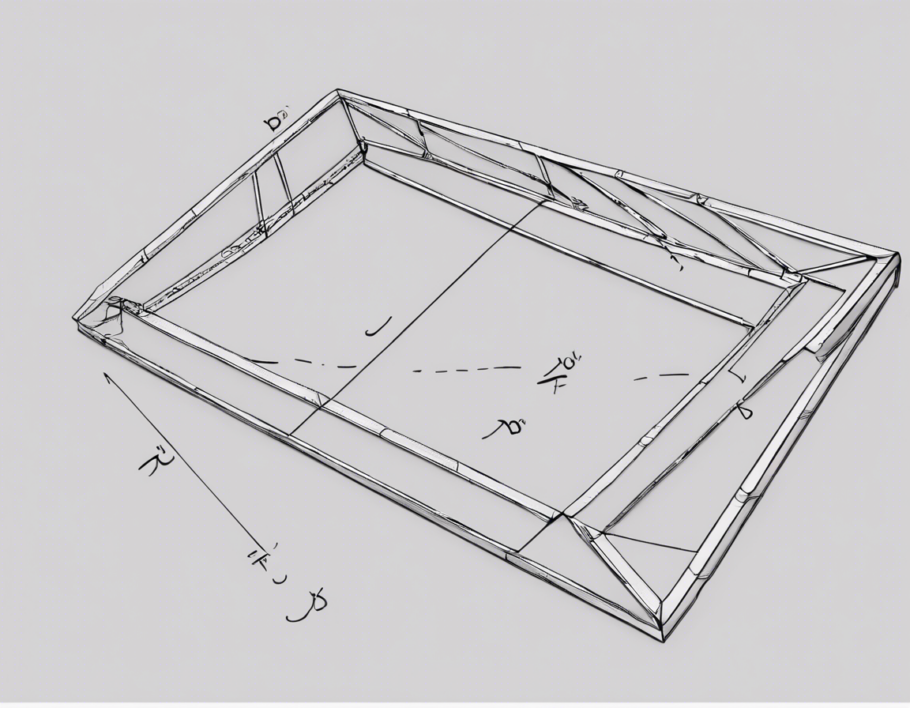Introduction
The trapezium is a quadrilateral with at least one pair of parallel sides. When it’s specified that the trapezium is an ABCD trapezium, it means that the parallel sides are denoted as AB and CD. This article will delve into the properties of an ABCD trapezium and explore its different aspects.
Definition of an ABCD Trapezium
An ABCD trapezium is a geometric figure with one pair of parallel sides AB and CD. The non-parallel sides, AD and BC, are of different lengths. This unique shape has several interesting properties that make it an essential concept in geometry.
Properties of an ABCD Trapezium
-
Parallel Sides: The most defining characteristic of an ABCD trapezium is that the sides AB and CD are parallel to each other. This property sets it apart from other quadrilaterals.
-
Angle Relationships: In an ABCD trapezium, the angles at the base (adjacent to the parallel sides) are supplementary. This means that the sum of angles A and B is equal to 180 degrees, as is the sum of angles C and D.
-
Diagonals: The diagonals of a trapezium are line segments that connect opposite vertices. In an ABCD trapezium, the diagonal AC divides the trapezium into two triangles – triangle ADC and triangle ABC. Similarly, the diagonal BD also divides the trapezium into two triangles – ABD and BCD.
-
Midsegment: The midsegment of a trapezium is a line segment that connects the midpoints of the non-parallel sides. In an ABCD trapezium, the midsegment is parallel to the bases and is equal to the average of the lengths of the parallel sides (AB + CD) divided by 2.
-
Area: The area of a trapezium can be calculated using the formula: Area = 1/2 x (Sum of parallel sides) x Height. For an ABCD trapezium, the area is calculated as 1/2 x (AB + CD) x Height.
Special Cases of an ABCD Trapezium
-
Isosceles Trapezium: In an isosceles trapezium, the non-parallel sides are equal in length. This leads to specific angle relationships within the trapezium, making it a unique case to study.
-
Right Trapezium: A right trapezium is a trapezium in which one of the angles is a right angle (90 degrees). This property introduces interesting geometric properties when analyzing the angles and sides of the trapezium.
-
Symmetric Trapezium: A symmetric trapezium is one where the diagonal AC is equal in length to the diagonal BD. In this case, the trapezium exhibits symmetry about its center point, leading to specific properties related to its angles and sides.
Applications of ABCD Trapezium
ABCD trapeziums find applications in various fields, including:
-
Architecture: Trapezium shapes are commonly used in architecture to create interesting facades or roof designs.
-
Engineering: Trapeziums are frequently encountered in engineering drawings, particularly in areas like construction and design.
-
Mathematics: Studying ABCD trapeziums helps students understand geometric relationships and properties, laying the foundation for more advanced mathematical concepts.
Summary
In conclusion, the ABCD trapezium is a fascinating geometric shape with unique properties that set it apart from other quadrilaterals. Understanding its characteristics, such as parallel sides, angle relationships, and diagonals, is essential in geometry and its real-world applications. By exploring the properties and special cases of ABCD trapeziums, we gain insight into the intricate world of geometry and its diverse applications.
FAQs (Frequently Asked Questions)
-
What is the difference between a trapezium and a trapezoid?
- A trapezium has at least one pair of parallel sides, while a trapezoid does not have parallel sides.
-
Can an isosceles trapezium be a parallelogram?
- Yes, an isosceles trapezium can be a parallelogram if the non-parallel sides are also equal in length.
-
How do you find the height of an ABCD trapezium?
- The height of a trapezium can be found by drawing a perpendicular line from one base to the other base and measuring its length.
-
Are the diagonals of a trapezium always equal?
- No, the diagonals of a trapezium are not always equal; it depends on the specific properties of the trapezium.
-
Can a trapezium have all sides of the same length?
- No, by definition, a trapezium has at least one pair of parallel sides with the other two sides being of different lengths.
This comprehensive guide explores the properties, special cases, and applications of ABCD trapeziums, shedding light on their significance in geometry and beyond.

